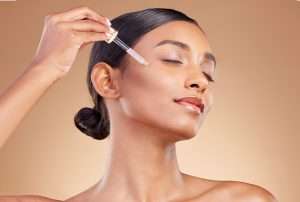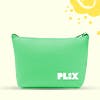How to Choose the Right Serum for Pigmentation: A Step-by-Step Guide

If you’re struggling with pigmentation issues, finding the right de pigmentation serum can make all the difference. Pigmentation, such as dark spots and uneven skin tone, can be a common concern for many individuals. Dealing with pigmentation can be frustrating, especially when you’re trying to achieve a clear and radiant complexion. Whether it’s dark spots, uneven skin tone, or hyperpigmentation caused by sun damage or acne scars, with the best serum for pigmentation, you can effectively target and reduce dark spots, revealing a brighter and more even complexion. In this comprehensive step-by-step guide, we will walk you through the process of choosing the right skin care product for dark spots & best serum for pigmentation that suits your skin’s needs. From understanding your skin type to identifying key ingredients, we’ve got you covered. Let’s dive in!
Related product – pigmentation serum
Cause of Pigmentation
Before we delve into the skin care product for dark spots and anti pigmentation serum selection, let’s understand pigmentation and its causes. Pigmentation refers to the coloring of the skin, which can become uneven due to various factors. The most common causes of pigmentation include sun exposure, hormonal changes, inflammation, and skin injuries. When the skin produces excess melanin, it leads to dark spots or patches that we commonly refer to as pigmentation. Here are some of the main factors that contribute to pigmentation:
Sun Exposure: One of the leading causes of pigmentation is excessive sun exposure. When the skin is exposed to the sun’s harmful UV rays, it triggers the production of melanin, the pigment responsible for skin color. Over time, this can lead to the development of dark spots and uneven skin tone.
Hormonal Changes: Hormonal fluctuations during pregnancy, menopause, or while taking hormonal medications can cause pigmentation issues. This type of pigmentation is commonly known as melasma or chloasma, which presents as dark patches on the face.
Inflammation and Skin Trauma: Inflammatory skin conditions such as acne, eczema, or psoriasis can contribute to post-inflammatory hyperpigmentation. When the skin undergoes inflammation or trauma, it produces excess melanin, resulting in the appearance of dark spots or patches.
Genetic Factors: Some individuals may have a genetic predisposition to developing pigmentation issues. This means that their skin cells may produce and distribute melanin unevenly, leading to the formation of dark spots.
Age: As we age, our skin undergoes various changes, including an increase in pigmentation. Age spots, also known as liver spots or solar lentigines, are a common type of pigmentation that appears on areas frequently exposed to the sun, such as the face and hands.
Medications and Chemicals: Certain medications, such as those used to treat cancer or hormonal disorders, may cause pigmentation as a side effect. Additionally, exposure to certain chemicals, such as those found in some skincare products or hair dyes, can trigger pigmentation issues in susceptible individuals.
Related Article – Pigmentation serum for face : Causes, treatment & how to choose right serum
Types of Pigmentation
Pigmentation can manifest in various forms and patterns on the skin. Understanding the different types of pigmentation can help in identifying the specific condition and determining the most suitable treatment approach. Here are some common types of pigmentation:
Hyperpigmentation: Hyperpigmentation refers to the darkening of an area of the skin due to excess melanin production. This type of pigmentation can occur in the form of dark spots, patches, or larger areas of discoloration. Hyperpigmentation is often caused by sun exposure, hormonal changes, or skin injuries.
Melasma: Brownish-gray patches that typically appear on the face during pregnancy or hormonal medication usage. Hormonal changes and sun exposure contribute to melasma.
Post-Inflammatory Hyperpigmentation (PIH): Darkening of the skin after inflammation or trauma, such as acne or skin injuries.
Sunspots or Age Spots: Flat, tan to dark brown spots that develop on sun-exposed areas, commonly seen in older individuals.
Freckles: Small, light brown or tan spots that often appear on fair-skinned individuals and darken with sun exposure.
Vitiligo: Loss of pigmentation resulting in white patches or depigmentation on the skin. It occurs when melanocytes are destroyed or stop functioning.
Choosing the Best Serum for Pigmentation: Step-by-Step Guide
Step 1: Determine Your Skin Type
Before you start your search for the perfect face serum for pigmentation, it’s crucial to understand your skin type. Different skin types have varying needs and react differently to skincare products. The common skin types include normal, dry, oily, combination, and sensitive. Assess your skin’s characteristics, such as oiliness, dryness, and sensitivity, to determine your skin type accurately.
Step 2: Identify Your Pigmentation Concerns
Not all pigmentation issues are the same, and different de pigmentation serums target specific concerns. Take a closer look at your skin and identify the specific pigmentation concerns you want to address. It could be dark spots, acne scars, sun damage, or overall uneven skin tone. By pinpointing your primary concern, you can narrow down your options and choose a de pigmentation serum tailored to your needs.
Step 3: Research Key Ingredients
When it comes to combating pigmentation, certain key ingredients have proven effective. When looking for skin care products for dark spots & finding the best serum for pigmentation, keep the following factors in mind:
Look for Active Ingredients: Effective anti pigmentation serums usually contain powerful active ingredients that work to lighten and brighten the skin. Two standout components to look for are AHAs and Niacinamide.
AHAs (Alpha Hydroxy Acids): AHAs are natural exfoliants that can help break down pigmented cells and promote skin cell turnover. Glycolic acid and lactic acid are popular AHAs found in serums. These acids can gently dissolve dead skin cells and reduce the appearance of dark spots, revealing a more even complexion.
Niacinamide: Niacinamide, also known as Vitamin B3, is an excellent choice for pigmentation-prone skin. It helps to inhibit melanin production, which means fewer dark spots and a more even skin tone.
Ensure that the anti pigmentation serum you choose contains at least one of these ingredients for optimal results.
Step 4: Consider Additional Skincare Concerns
Apart from using face serum for pigmentation, you may have other skincare concerns that you’d like to address simultaneously. For instance, if you have dry skin, you might want a de pigmentation serum that provides hydration as well. Similarly, if you’re worried about fine lines and wrinkles, opt for a serum with anti-aging properties. Look for anti pigmentation serums that offer multiple benefits to meet your individual skincare needs.
Step 5: Check for Product Reviews and Recommendations
One of the best ways to gauge the effectiveness of an anti pigmentation serum is by checking product reviews and recommendations. Look for reviews from individuals with similar pigmentation concerns to yours. High ratings and positive feedback can indicate that the serum has worked well for others. Additionally, consult skincare experts, dermatologists, or trusted beauty bloggers for their recommendations. Their expertise can guide you toward reliable and effective serums.
Step 6: Patch Test the Serum
Before incorporating a new anti pigmentation serum into your skincare routine, it’s essential to patch-test the product. Apply a small amount of the serum on a discreet area of your skin, like behind your ear or on your inner arm. After that notice if your skin faces any adverse reactions such as such as redness, itching, or irritation. If there are no negative effects after 24 hours, the serum is likely safe for use.
Skincare Routine for Pigmentation:
Apart from finding the best serum for pigmentation, it’s crucial to follow a comprehensive skincare routine & use various skin care product for dark spots to address this concern effectively. Here’s a simple and effective skincare routine to help you on your journey to brighter and more even-toned skin:
Gentle Cleansing: Start your routine with a mild and gentle cleanser to remove impurities and excess oil without stripping your skin’s natural moisture.
Exfoliation: Regular exfoliation helps remove dead skin cells, allowing serums and other products to penetrate better. Look for gentle exfoliants containing alpha hydroxy acids (AHAs) like glycolic acid or lactic acid.
Serum for Pigmentation: This is the star of the show! Using the best serum for skin brightening can help in targeting pigmentation & can significantly improve your skin’s appearance.
Sunscreen is Non-Negotiable: Sun protection is essential in preventing further pigmentation. Always wear broad-spectrum sunscreen with at least SPF 30 daily, even on cloudy days.
Moisturize: Keep your skin hydrated with a nourishing moisturizer suitable for your skin type.
Night Care: Consider using a retinol-based product at night to encourage cell turnover and fade dark spots over time.
Be Patient: Remember, addressing pigmentation takes time and consistency. It’s important to follow your skincare routine regularly and be patient for the results to show up.
Plix Pineapple De-Pigmentation Serum for Dark Spot Correction
Introducing Plix Pineapple De-Pigmentation Serum – an effective solution for targeting dark spots and achieving a brighter, even-toned complexion. If you’re searching for the best serum for skin brightening and treating pigmentation issues, Plix Pineapple De-Pigmentation Serum is the perfect choice. With its carefully selected ingredients, this serum offers a range of benefits to address your specific needs:
– Fades Pigmentation: Clinically backed, this is the best serum for skin brightening which is specially designed to reduce pigmentation within 4-6 weeks of regular use. Experience the gradual fading of dark spots, allowing your skin’s natural beauty to shine through.
– Diminishes Dark Spots: With the power of 2% Alpha Arbutin, a natural hydroquinone glucoside found in berries, this serum effectively targets and minimizes dark spots caused by melasma. Witness a visible decrease in the intensity of dark spots, promoting a more even complexion.
– Promotes Brightness & Even Skin Tone: Infused with 10% Niacinamide, a multifunctional ingredient, this serum helps promote a brighter and more even skin tone. Enjoy a youthful glow and vibrant complexion with continued use.
– Gentle Exfoliation: Plix Pineapple De-Pigmentation Serum gently exfoliates your skin, eliminating dead skin cells and revealing a smoother, more refined complexion. Experience the renewal of your skin’s texture and a refreshed appearance.
Plix Pineapple De-Pigmentation Serum helps address your pigmentation concerns to a great extent. Its scientifically formulated blend of ingredients works synergistically to fade pigmentation, diminish dark spots, and promote a brighter, even skin tone. Elevate your skincare routine and unlock the potential of your skin with the Plix Pineapple De-Pigmentation Serum. Try it today and embrace the journey towards a more radiant complexion.
Remember choosing the best serum for pigmentation is a personal journey, and it’s important to find what works best for your skin. With patience, consistency, and the right ingredients, you can achieve a brighter, more even complexion. Remember to consult with a skincare professional or dermatologist for personalized advice if you have specific concerns.
Frequently Asked Questions (FAQs)
How long does it take to see results with pigmentation serums?
Results are highly dependent on the cause and severity of pigmentation and it may differ form person to person. It generally takes several weeks to months of consistent use to see noticeable improvements. Be patient and consistent with your skincare routine.
Can serums completely remove pigmentation?
While serums can significantly reduce the appearance of pigmentation, complete removal may not be possible. Consistent use of the right serum, along with proper skin care practices, can help fade pigmentation and prevent further discoloration.
Should I use sunscreen while using pigmentation serums?
Absolutely! Sunscreen is essential when dealing with pigmentation. Sun exposure can worsen pigmentation and make it harder to fade. Look for a broad-spectrum sunscreen with SPF 30 or higher and apply it generously every day, even on cloudy days.
Can I use a pigmentation serum if I have sensitive skin?
Yes, but it’s essential to choose the face serum for pigmentation that is specifically formulated for sensitive skin and perform a patch test to check for any adverse reactions.
Are there any side effects of using serums for pigmentation?
While serums are generally safe to use, some individuals may experience mild side effects like temporary redness or dryness. If you have sensitive skin or any concerns, consult with a dermatologist before incorporating a new serum into your routine.
Can I use multiple serums for pigmentation at the same time?
Layering multiple serums can be beneficial, but it’s important to ensure the ingredients are compatible and won’t cause irritation. It’s best to consult with a dermatologist or skincare professional for personalized advice.
Can I apply Plix Pineapple De-Pigmentation Serum under makeup?
Absolutely! Plix Pineapple De-Pigmentation Serum has a lightweight, non-greasy formula that makes it suitable for use under makeup. It absorbs quickly into the skin, leaving no residue, so you can apply your makeup as usual after using the serum.
Can Plix Pineapple De-Pigmentation Serum be used on sensitive skin?
Yes, Plix Pineapple De-Pigmentation Serum is formulated to be gentle on the skin. However, when using a skincare product for the first time, it is necessary to do a patch test before applying it directly to your face. If any irritation or discomfort occurs, discontinue use and consult a dermatologist.
Can I use Plix Pineapple De-Pigmentation Serum in my daily skincare routine?
Absolutely! Plix Pineapple De-Pigmentation Serum is designed to be incorporated into your regular skincare routine. Take a few drops of the serum on your palm then apply it to your face and gently massage it in until fully absorbed. Ensure that your face is clear and dry before applying the serum. Follow up with your moisturizer and sunscreen for maximum protection and hydration.














